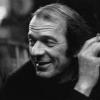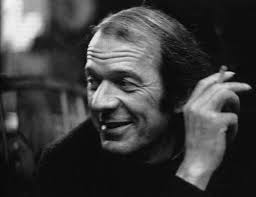Description
The Deleuze Seminars is a collection of audio recordings, transcriptions, and English translations of, and supplemental materials from, the lectures French philosopher Gilles Deleuze gave during his career at the University of Paris 8.
“The Movement-Image: Bergsonian Lessons on Cinema” was a 21-lecture seminar given from November 1981 to June 1982. This seminar marks the first of four consecutive seminars in which Deleuze presents his theory of film. Here, in large part through the philosophy of Henri Bergson, Deleuze rethinks film as a movement-image, as opposed to a succession of still frames or photographic images. Throughout the course he references a wide variety of filmmakers, critics, and philosophers. As a precursor to the publication of Deleuze’s first of two volumes on cinema, Cinema 1: The Movement-Image (Cinéma 1. L'Image-Mouvement, 1983), this seminar is a valuable resource to researchers interested in Deleuze’s film theory, as well as his larger philosophical oeuvre.
In the 11 May 1982 lecture, Deleuze provides a summary of the course to date. Other topics of discussion include: Burlesque; the small form; American comedians and filmmakers of the silent era Buster Keaton and Harold Lloyd; Charlie Chaplin; the pure optical situation and the view of the intolerable; the cliché-image; the sensory-motor situation (which no longer is, and only appeared to be, the upheaval, or fear, in excess); Italian film director Roberto Rossellini's Europe '51 (Europa '51); the eye of the spectator; the neo-realist image; the art of encounters (rencontres); the child in Italian neo-realist film; the French New Wave; and the French filmmaker Jacques Tati.
This dataset includes: two mp3 recordings of the lecture (total time, 1:24:32), an aggregate version of the audio recordings into a single mp3, and the complete French transcription of the recorded lecture in both pdf (18 pp) and plain text.
Note: The first (approx.) 1:17 of both the part 1 and complete audio files, during which a student is asking Deleuze a question, has not been transcribed completely.
-
Les Séminaires de Deleuze sont une collection d'enregistrements audio, de transcriptions et de traductions en anglais et de documents complémentaires des conférences que le philosophe français Gilles Deleuze a donné lors de sa carrière à l'Université de Paris 8.
«L’image-mouvement, Leҫons bergsoniennes sur le cinéma» était un séminaire de 21 conférences donné de novembre 1981 à juin 1982. Ce séminaire marque le premier de quatre séminaires consécutifs dans lesquels Deleuze présente sa théorie du film. Ici, en grande partie grâce à la philosophie d'Henri Bergson, Deleuze repense le film comme un image-mouvement, par opposition à une succession d'images fixes ou d'images photographiques. Tout au long du cours, il fait référence à une grande variété des cinéastes, des critiques et des philosophes. En tant que précurseur de la publication des premiers volumes de Deleuze sur le cinéma, Cinéma 1. L'Image-Mouvement (1983), ce séminaire est une ressource précieuse pour les chercheurs intéressés par la théorie du film de Deleuze, ainsi que sa plus grande œuvre philosophique.
Dans la conférence du 11 mai 1982, Deleuze fournit un résumé du cours à ce jour. Les autres sujets de discussion comprennent: Burlesque; la petite forme; les comédiens et cinéastes américains de l'ère silencieuse Buster Keaton et Harold Lloyd; Charlie Chaplin; la situation optique pure et la vue de l'intolérable; l’image-cliché; la situation sensori-motrice (qui n'est plus, qui n’ était qu’en apparence, le bouleversement, la peur, en excès); Europe 51 du réalisateur italien Roberto Rossellini; l'oeil du spectateur; l'image néoréaliste; l'art des rencontres; l'enfant dans le cinéma néoréaliste italien; la Nouvelle Vague; et le cinéaste français Jacques Tati.
Cite this work
Researchers should cite this work as follows:
- Gilles Deleuze (2017). The Movement-Image: Bergsonian Lessons on Cinema: Lecture 18, 11 May 1982. Purdue University Research Repository. doi:10.4231/R7DB800V
Tags
Notes
This research has been generously supported through a grant from the College of Liberal Arts, Purdue University.
The description of this dataset is based on the meticulous work of Frédéric Astier, whose Les cours enregistrés de Gilles Deleuze, 1979-1987 has catalogued Deleuze’s seminars for those years.
Special thanks to the family of Gilles Deleuze and the University of Paris 8 for permission to reproduce the material published here.
The Deleuze Seminars
This publication belongs to the The Deleuze Seminars group.

